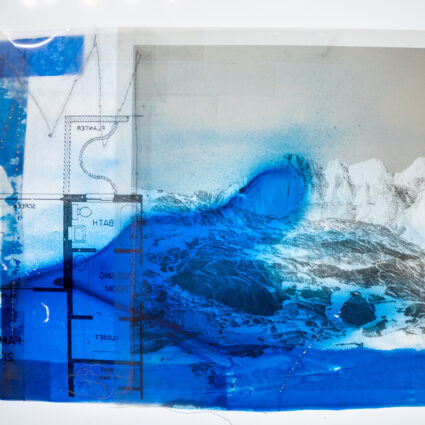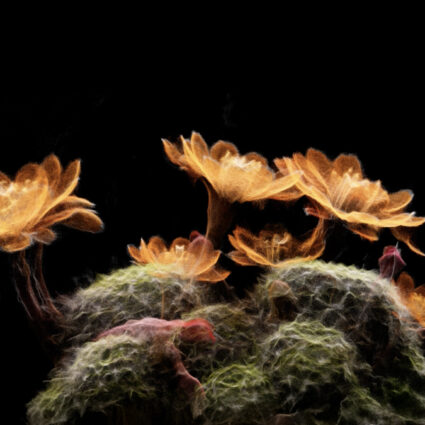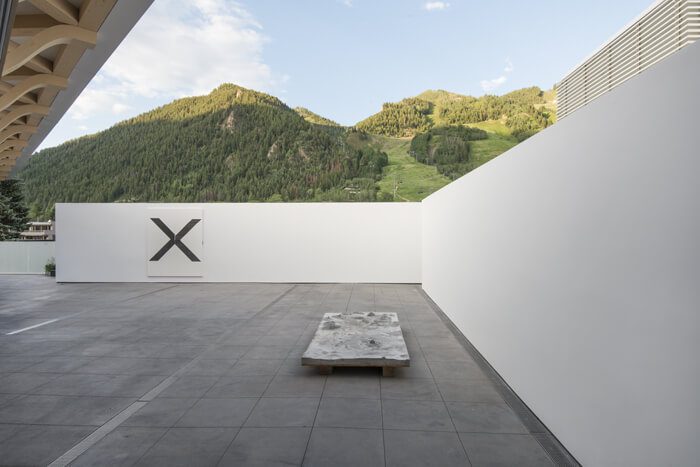
Field Report: Aspen
Distance: 303 miles
Elevation: 800 feet
Population: 6,871
Aspen is something of a wonderland. Tucked away and remote in the Roaring Fork Valley, vestiges of the town’s founding as a mining town turned ski resort are still visible in the now multi-million dollar Victorian homes that line the streets of the historic core. Catering to the tastes of second-, third-, and fourth-home owning jetsetters, high-end retail stores (Prada, Dior, Tesla are among the countless store fronts) occupy quaint red-brick buildings amid high-end furnishings and world-class restaurants. It’s a charming, if not slightly eerie, Alpine playground.
Above and beyond all of the glitz are far more substantial reasons to make a visit: a truly spectacular landscape for outdoor activities sets the stage for multiple prestigious and active institutions including the Aspen Music Festival and School, the Aspen Institute, the Aspen Center for Physics, and the Aspen Art Museum.
A small but top-tier art scene is also at work and thriving, especially during the early-August confluence of ArtCrush, the Aspen Art Museum’s blockbuster fundraiser that attracts art world luminaries, and Art Aspen, a boutique fair limited to just 30 exhibitors from international, national, and regional art hubs. Other early-August perks include gardens and hiking trails overflowing with radiant, lush flowers, and crisp, clear Alpine air. Here are some of our top hits from the weekend:
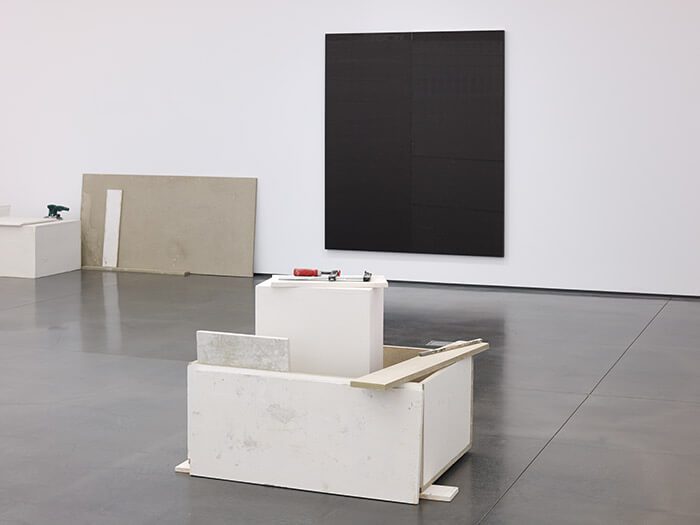
Aspen Art Museum
Wade Guyton Peter Fischli David Weiss
June 22 – November 26, 2017
Wade Guyton Peter Fischli David Weiss is a collaboration between Swiss artists Peter Fischli and David Weiss (1946–2012), known during their thirty-three-year collaboration as Fischli and Weiss, and American artist Wade Guyton. Encompassing the entire Shigeru Ban–designed museum, the show pours out of the gallery spaces onto the rooftop deck and the exterior sidewalk, obscuring part of the basket-weave-like façade. In the first gallery, Fischli and Weiss’s installation of mundane gallery and studio objects—pedestals, blue painter’s tape, tools, paint cans—is made entirely of polyurethane and painted so realistically that it took me almost a full turn around the space before noticing that none of it was real. The room is punctuated by Guyton’s paintings, which are in fact not paintings but digital photographs, enlarged and ink-jet printed on canvas, turning paintbrush into printer. While Guyton’s work alone feels already outmoded, its appeal as painterly simulacrum is accentuated by Fischli and Weiss’s humorous tricksterism, in which even select gallery walls are labeled as artworks, including one wall that protrudes into the city of Aspen.
The show results in a curious and immersive equivocation that is full of double takes. In the basement gallery, Fischli and Weiss’s Rat and Bear (Sleeping) (2008), is two stuffed animals lying supine, a breathing machine so subtly inflating their chests that it is easily overlooked. Upstairs, Guyton’s recent New York Times series (2016) are large canvases printed with the Times website landing page. Each depicts headlines alongside goading advertisements—centering and supersizing the usually encapsulated, screen-size experience of pervasive online chatter.
On the rooftop deck, one of Guyton’s signature X paintings, Untitled 2017, hangs on Guyton and Fischli’s Wall I (2017) (that is, an art-work wall performing the exact function of a real wall) against a backdrop of Aspen Mountain Ski Resort, lushly green and crisscrossed with ski lifts and runs, performing a merger of the white cube and real life (as real as life can be there among the 1% jet set).
The conceit seems to come from outside of the art world vernacular altogether, in which the viewers are the targets in some mischievous plot. Even the gallery guides were intentionally designed by the artists as large posters that had to be clumsily and entirely unfolded in order to be read, engaging viewers in an awkward, theatrical act. The exhibition examines, and even illustrates, how perception of spaces and contexts, from museum galleries to the mediascape, fundamentally affect our understanding of images and objects.
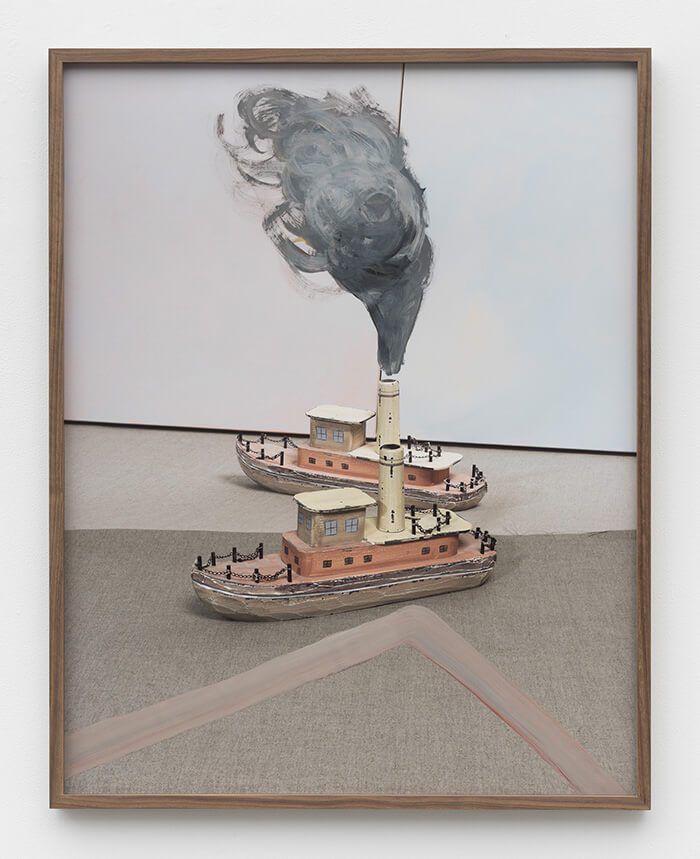
Boesky West
John Houck: Tenth Mountain
July 27 – October 1, 2017
In March of this year, high-profile Chelsea gallerist Marianne Boesky opened her first outpost outside of New York. Boesky West opened with an exhibition of Frank Stella and Larry Bell, and this summer the lofty modern building is exhibiting a solo show by LA-based artist John Houck. Houck’s layered photographic work begins with capturing an object, then folding, painting, repositioning, or otherwise manipulating the image, then re-photographing the image, sometimes repeating this process multiple times. Characterized by a spare aesthetic, Houck captures objects that range from pieces of color-blocked paper to intimate, homey items including a wooden duck, a toy boat, and a carpenter’s square. Houck’s experiments in form and process result in a sort of veiling that discloses as much as it covers up, and confounds photography’s representational capacity as the works turn inward as images of themselves that can only be dissected, if at all, through a prolonged meditation, like tracing one’s steps to find something lost.
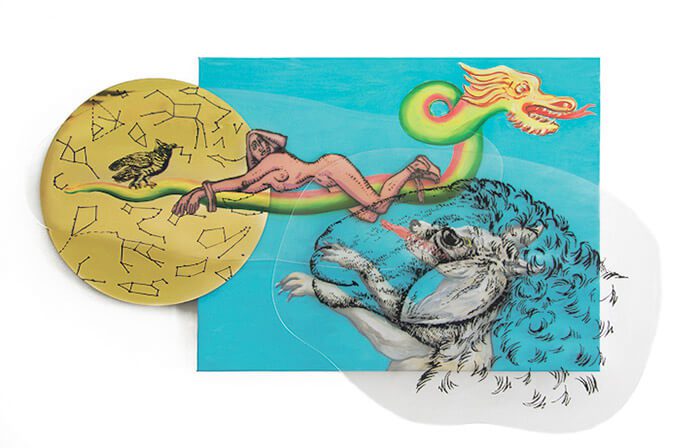
Harvey Meadows Gallery
Kim Dickey, Pamela Joseph, Robert Silverman, and Kevin Snipes
August 3 – September 15, 2017
Harvey Meadows Gallery, operated by ceramic artists Sam Harvey and Alleghany Meadows since 2005, specializes in contemporary ceramics and works on paper. Colorado artist Kim Dickey’s foliate ceramic sculptures recall formal garden design while repurposing art historical motifs. In No Resting (Determination) (2016) a ceramic arm thrusts forth a laurel crown in a symbol of power and hope among the other sculptures of highly symbolized and idealized animalia. Pamela Joseph’s work also uses archetypes and symbols, often layering paper, acetate, and Plexiglas to bring zodiac constellations together with historical imagery. In Iron Maiden Mirror Unicorn (2017), a woman wearing the fictive iron maiden torture device is layered with the constellation Monoceros, or unicorn, a symbol associated with chastity.
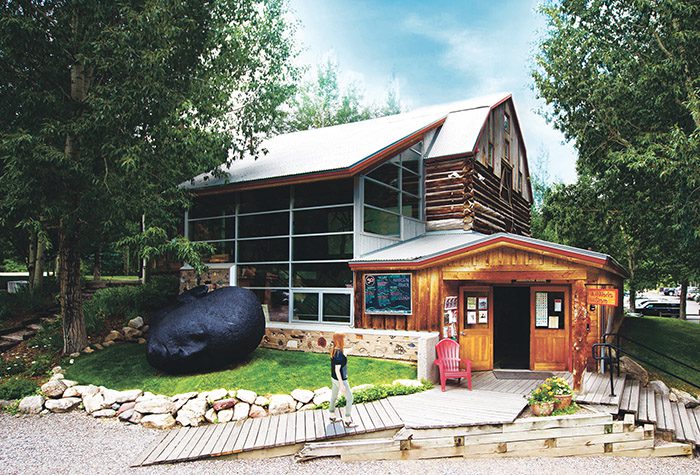
Anderson Ranch Arts Center
Anderson Ranch’s five-acre campus is technically located in Snowmass Village, a quick and scenic 8.5 mile drive from central Aspen. The arts center was founded in 1966 by ceramic artists Paul Soldner and Peter Voulkos, photographer Cherie Hiser, and furniture designer and woodworker Sam Maloof, and has welcomed countless visiting artists and students ever since. The arts center offers over 150 artist workshops in the summer and winter, and artist residencies in the spring and fall. The campus is open to the public to visit, and is a lovely combination of modern facilities contrasted with on-trend rusted, corrugated tin and wild, grassy lawns, evoking alpine nostalgia and allowing for creative spaciousness. During my visit the Center was holding its annual art auction and community picnic—also open to the public—during which over 200 works of art were available at prices from $100 to $20,000, all against a backdrop of live bluegrass, grilled hotdogs, and whispering Aspens.
Honorable Mentions
Stroll the campus of the Aspen Institute, an international think tank, to survey the Bauhaus-inspired architecture and locate Andy Goldsworthy’s Stone River (2006). Take in a classical performance during the Aspen Music Festival (2018 dates: June 28-August 19) from a seat inside the quasi-open air theater, or do as the locals do and pull up a blanket and picnic basket under the aspen trees just outside.
As for some considerations on where to stay and dine: head to an Airbnb in Snowmass Village for lower costs and a change of scenery. Eat a Mediterranean, upscale meal at The Wild Fig if you don’t want to break the bank; have sushi and cocktails at Matsuhisa if you do. Have a healthy, organic breakfast at Peach’s Corner Cafe, or pick up breakfast burritos at Fuel for your day hike up to Cathedral Lake in the Maroon Bells-Snowmass Wilderness. Oh, and the long line for ice cream at Paradise Bakery is well worth your wait!

